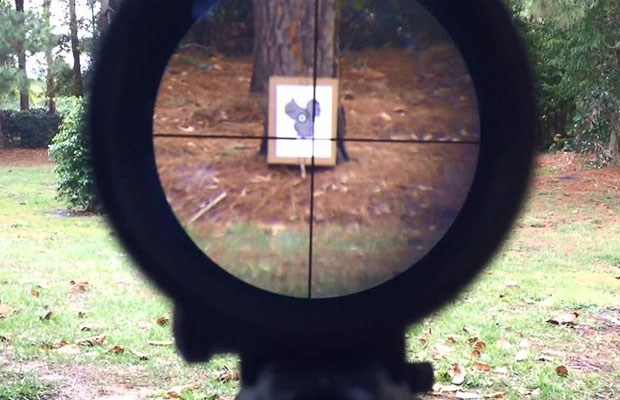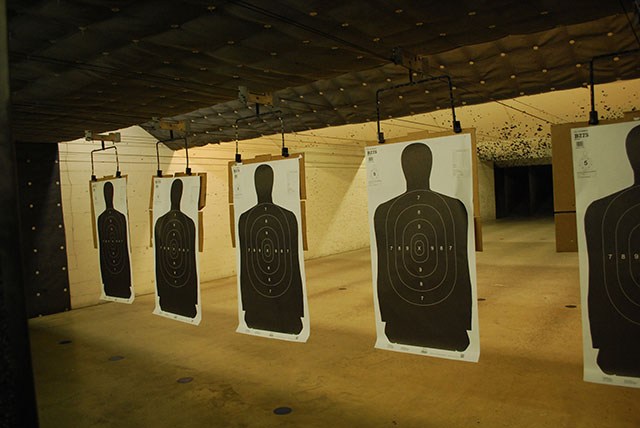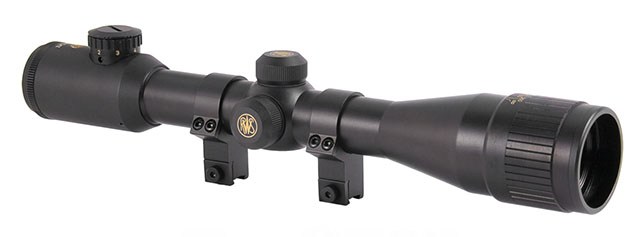
When you own a long-range shotgun, it’s all about taking those perfect, accurate shots. But it’s not always easy, not even if you’re a seasoned shooter, but especially if you’re a novice. So mounting a scope on your rifle seems like the obvious and easy solution, but it might not actually be as easy as you thought. Unless you are zeroing your rifle scope before you count on it to help you hit the target, there’s no use if firing a single shot. So here are a few tips and tricks on how to do that, with very little effort or time involved.
Defining the process
First of all, zeroing your rifle scope simply means adjusting your sights so that you can hit with precision the target you have in mind when firing from a given distance. Speaking of distance, it varies depending on the type of shooting you’re doing, the caliber you are using, the scope adjustment unit of measurement and, last but not least, on your personal preferences.
Normally, the shorter the distance the easier it is to zero your scope, keep it that way and shoot your target with maximum accuracy. This is because on a shorter distance, the point of impact is less affected by external variables. A short-range here means approximately 100 yards. A longer one of, let’s say 300 yards, will be a lot more difficult to shoot and it will actually render your scope pointless on the long run. Which is to say that you need to zero it all over again, after each shoot, because the external variables have changed.
Setting up your scope
This is the first step you need to take in the whole process of zeroing the scope on your shotgun. First and foremost, adjust the eyepiece, which is the rear lens of the scope. This part can actually be rotated in order to focus your eye on the reticle. Don’t forget to do this, as you need a perfectly sharp reticle when it comes to long-range shooting. It will also help to look at your target solely through the reticle and not with your naked eye, or, worse, to keep shifting your gaze at it between the reticle and the naked eye, which leads to unnecessary eyestrain. When the image is crisp and clear, you will know you have gone through this step correctly.
You also need to level the cross-hair. It’s probably best if you mount the shotgun on a stand, so that it can be held in a steady position. You need its stock to be level and square to the ground. Rotate the cross-hair so that the vertical one is right in the center. If it helps, you can imagine a line running through the cross-hair that also runs directly through the center of your rifle. Certain adjustments can be made later on as well, but it’s a very important step to get it correctly aligned now, before you tighten it down.
Testing the scope
After you mounted and properly adjusted the scope on your shotgun, the best way to test it is to head out to the shooting range, where you can shoot it safely and repeatedly. It’s also easier to measure the distances and the backstops while you’re there, as opposed to being out in the open, for example.
Here are some tips and tricks for practicing at the range while testing your scope:
- Practice on a bulls-eye custom-made for zeroing. They normally have many measurements, which will make the adjustments very accurate.
- Study those measurements thoroughly after each shot, in order to determine how “off” you were. Only by doing this will you be able to tell what you need to do next and if you’re improving or not.
- Always follow the rules and regulations of the range you’re shooting at. This will help you develop a correct shooting technique.
- Mount the gun on a rest. Although you might be tempted to hold the rifle yourself, remember the ideal way of shooting with high accuracy is when the rifle is securely locked on a rest. This eliminates user-error or slight trembling of the hand.

Choosing a scope
And last, but not least, be careful when you select your scope. All the steps mentioned above will come to nothing if you have the wrong scope. There are many great rifle scopes you could go with, so here are some pointers to help you choose.
- Don’t go over the top. Indeed, the technology used for making shotgun scopes keeps getting better and better every year, producing bigger and more accurate scopes all the time. But that doesn’t mean you have to choose those ones. Remember the simple rule of not buying a Ferrari just so you can go grocery shopping. Choose the one right for your eyes, your prey, your shotgun and the distance you’re shooting from.
- Do your homework on technical details. This is the easiest and surest way to know which scope is best for your needs. You need to find out and learn that, in a 3-9X40 scope, 3 means three power. The image you’ll be seeing through your scope will be magnified three times. The nine means 9 power, or 9 time, 9X closer than you see it with your naked eye. You can find many articles and tutorials online with a simple search.
- Understand a rifle scope’s anatomy and learn the terminology. Although it might look simple at a first glance, a scope is actually a complicated and delicate piece of equipment, made up of many intricate parts. Take knowledge on your side and find them out. You will want to learn about the eye piece, the ocular lens or the eye relief. If you don’t choose a proper eye relief, for example, you might get a black eye. Why? Because if the eye relief you’ve selected doesn’t allow for much space between your face and your gun, the recoil will hit you right in the eye. These are all things you should know before getting into the business.
So there you have it; some easy ways in which you can make zeroing your shotgun’s scope fun and less time-consuming. And with hunting season in full swing, we definitely need this advice.






















